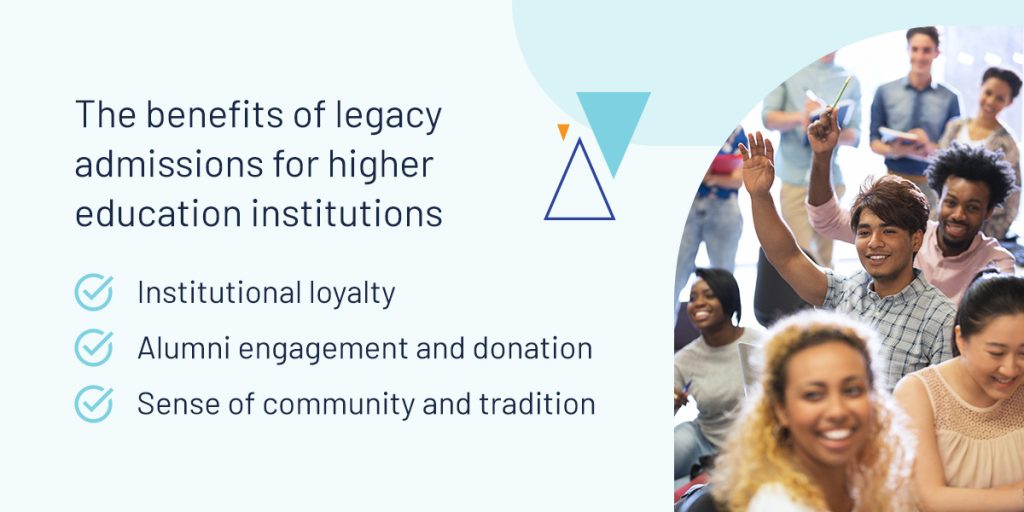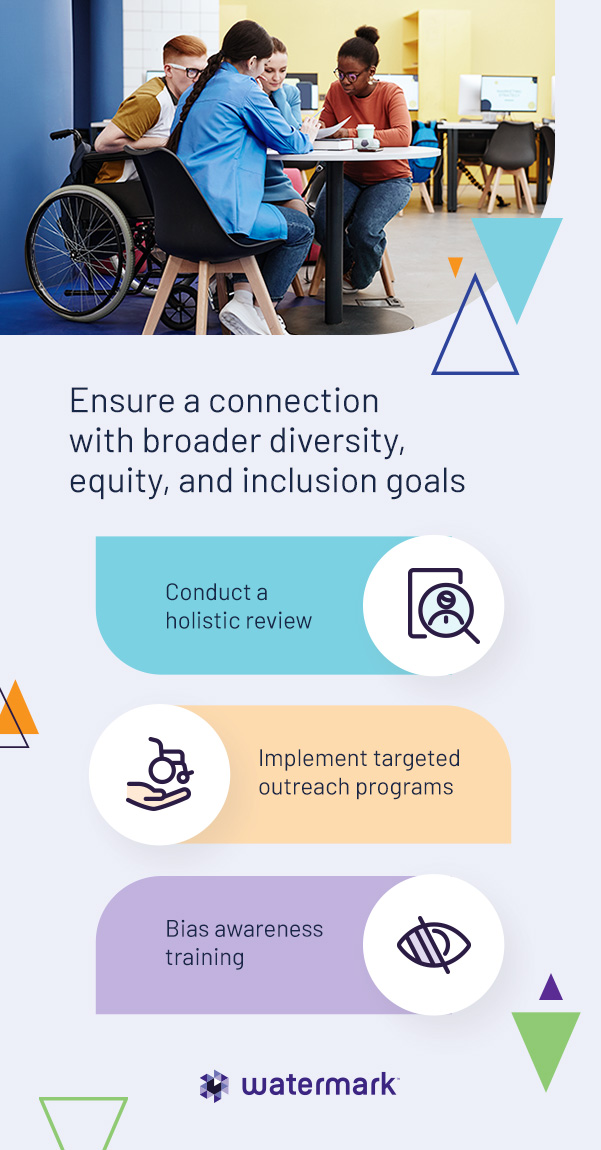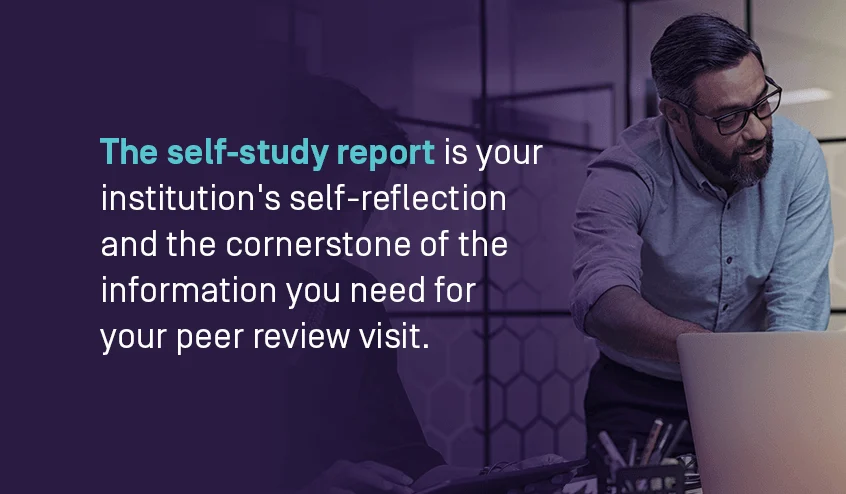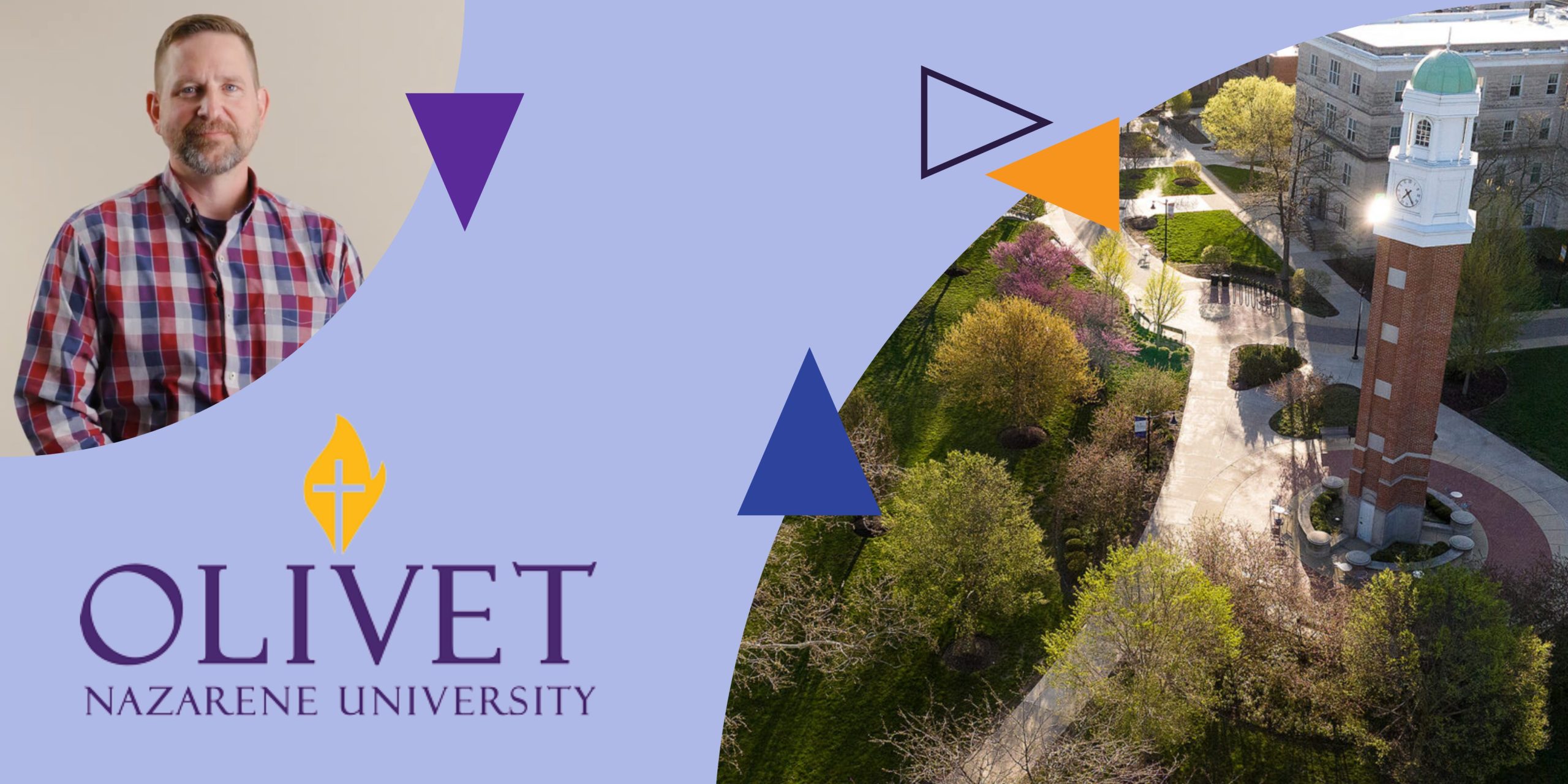
After the U.S. Supreme Court ruled that affirmative action — or considering an applicant’s race in college admissions — is unlawful, legacy admissions have also come into question. In the 2021-2022 academic year, 2.1 million undergraduate students enrolled in higher education institutions, considering legacy status in their admissions. With the practice now under scrutiny, institutions must understand its impact and adjust their admissions processes if necessary.
Legacy admissions have pros and cons, so understanding how they relate to other admission programs is essential to decision-making. Institutions that consider legacy status must ensure that first-generation students and students from diverse groups receive the support they need.
What are legacy admissions?
Legacy admissions at higher education institutions involve giving preferential treatment to applicants related to an alumnus. It’s one of many factors institutions consider during the admissions process, and it is by no means a guarantee of attendance. Legacy students must still have the necessary grades, test scores, and extracurriculars for the institution to consider them, but having legacy status does give them a boost.
This admission framework has a long history in higher education. It began in Ivy League colleges in the 1920s and still exists at many institutions today. The practice is controversial, and with 75 percent of Americans saying it shouldn’t be a factor, some institutions have abandoned it altogether. Institutions like the Massachusetts Institute of Technology, Johns Hopkins University and the California Institute of Technology do not practice legacy admissions. While many believe it perpetuates inequality by favoring students from privileged families, it offers institutions some significant benefits.
In today’s education landscape, institutional decision-makers must consider the impact of legacy admissions on their reputation and values. Like any admissions process, it has advantages and drawbacks. It’s essential to assess how legacy admissions align with your mission. This information helps you support first-generation or transfer students who may require more resources and guidance to acclimatize to their academic environment.
The benefits of legacy admissions for higher education institutions

Several motivators exist for institutions to admit legacy applicants:
Institutional loyalty
Admitting legacy students can build lasting relationships with families with a history of involvement and support. This continued engagement has led to generations of support, which enhances financial and cultural stability. They can also improve an institution’s prestige and reputation, attracting more applicants from all walks of life. In time, the children of new applicants can become legacy admissions themselves, which can shape the institution for generations to come.
Alumni engagement and donation
Higher education institutions benefit financially from admitting legacy students. They are more likely to be able to pay for tuition and may also be more likely to accept an offer from their legacy institution. It’s a common misconception that legacy students are admitted at the expense of first-generation students. Instead, their financial stability may allow institutions to have more robust scholarship programs.
The sense of loyalty that legacy admissions create in alumni can lead to increased donations and support for your institution. Alumni with positive experiences are more likely to give back financially, which can help fund research programs, scholarships, and campus improvements. Legacy admissions can also make enrollment stable and more predictable. Institutions can streamline financial planning by attracting students more likely to accept offers due to family ties.
Sense of community and tradition
Legacy ties to a higher education institution often build community among students and alumni.
They speak to the institution’s rich history. Some argue that banning the practice would dilute the sense of community fostered over generations and undermine student desires to attend these institutions. On a larger scale, it may even weaken the competitive position of U.S. higher education institutions compared to the rest of the world.
Many institutions want students who know their roots and care about the past. Legacy students may be more likely to immerse themselves in campus culture and contribute to the institution.
Concerns about legacy admissions
While legacy admissions can benefit higher education institutions, some significant concerns exist. Institutions must weigh these issues against the benefits to establish the overall effects of this practice on campus culture, student retention, and engagement.
Several elite colleges have ended the practice in the last decade due to its potential for bias and meritocracy. Some of the potential drawbacks of college legacy admissions include:
Equity and fairness
Some factions argue that by perpetuating legacy admissions, higher education institutions discriminate against less privileged students to benefit legacy students, who are often financially secure. Each legacy student that they prioritize shuts out a deserving student from a more challenging background. Perpetuating this privilege can have significant consequences, including a system where familial connection means more than academic achievement.
Preferential treatment based on family can reinforce existing social inequality, which raises concerns about fairness in the admissions process. The diversity pool in higher education is already disproportionate, and legacy admissions can reinforce this imbalance and limit socioeconomic and racial diversity on campus.
Misaligned admissions priorities
Giving preference to legacy applicants can also contradict one of the most fundamental priorities for higher education institutions — academic success. Outside of their familial ties, legacy students may not be the best fit personally or academically, which can lead to a decline in educational quality.
Impact on student performance
The learning environment, academic performance, and student engagement are the cornerstones of many higher education institutions. Misaligned admissions priorities can impact an institution’s overall performance and learning environment. The student body may lack diversity in its preparedness and capabilities, which, in turn, affects educational outcomes.
If many students at the institution were admitted because of their legacy, they may fall short of the academic standards set by their peers. Over time, this imbalance can affect the quality of education and the learning experience of all students.
Affect on transparency in merit-based admissions
Legacy admissions are an unwritten rule rather than a formalized initiative. External parties can only guess at the amount of weight institutions place on family ties. Critics argue that this leads to a lack of transparency in admissions. Institutions may not disclose the extent to which legacy status affects their decisions, which can be demoralizing for non-legacy students who have worked hard to attend.

Legacy admissions open the door to subjectivity instead of a purely meritocratic approach. They undermine the principles of equal opportunity, which can erode public trust and cast doubt on the legitimacy of the admissions process.
Implications for diversity initiatives and underrepresented groups
Just as admissions based on family ties promote an institution’s legacy, they also promote a legacy of bias. Legacy students are more likely to be white, which has significant implications for diversity initiatives and underrepresented groups. Legacy status may benefit a select group, but institutions risk limiting diverse representation and experiences within the student body.
Some groups say this lack of diversity could hinder efforts to create an inclusive and equitable learning environment. Instead of prioritizing cultural competency and collaboration, institutions may maintain residual disparities in access to higher education opportunities.
What your institution should consider with legacy admissions
Legacy admissions can have long-term implications, and many institutions are considering a balanced approach to admissions. The aim is to foster a more equitable environment and create a richer and more diverse educational experience.
When deciding whether legacy admissions are the right choice for your institution, there are many elements to consider. The first step is to gather information that will help you make an informed decision that suits the needs and goals of your institution, faculty, and students.
Some principal legacy admissions considerations include:
Focus on alignment with institutional mission and values
Continuity is crucial to your institution’s mission. From admissions to degree completion, your vision and values must remain clear to your students and faculty. Start by identifying your core values. For example, they might include a commitment to academic excellence, diversity, or leadership development.
Many institutions communicate their values in admissions materials to attract candidates who embody them and build a community that reflects their vision. If your admissions process is at odds with these core values, it could erode the sense of community you want to build. Even if you have an existing value set, it may be worth revisiting to identify and address improvement opportunities.
Some tips for defining clear and congruent values include:
- Involve stakeholders: Students, administrators, faculty, and alumni are essential to maintaining your values. Involve them in the admissions process from the outset to get an accurate representation of your core values.
- Invite feedback: Conduct surveys to understand stakeholders, how they perceive your values, and how to better align with them. This data will be used to inform future admissions decisions.
- Implement admissions protocols: One of the most effective ways to ensure admissions align with your values is to remove ambiguity from the process. Implement clear protocols, checks, and balances to embody your core mission throughout the admissions journey.
Ensure a connection with broader diversity, equity, and inclusion goals

Higher education diversity, equity, and inclusion (DEI) programs aim to improve representation and opportunities for students from traditionally underrepresented backgrounds. With careful planning, legacy admissions can enhance rather than impede these initiatives. However, the controversy requires a measured approach.
Some strategies your institution can implement to ensure admissions align with diversity objectives include:
- Conduct a holistic review: Few institutions admit students solely based on academic results and test scores. Instead, they take a holistic view that considers other contextual information to evaluate an applicant’s potential. Legacy status can form part of this holistic approach, providing you counterbalance it with other criteria, such as personal experiences.
- Implement targeted outreach programs: Outreach programs are an excellent way to connect with underrepresented communities and help you maintain your DEI objectives.
- Bias awareness training: Train your admissions staff to identify and handle bias when evaluating applications. Eliminating unconscious biases can provide equal opportunities to all applicants, regardless of their legacy status.
Provide support for students from diverse backgrounds
Legacy students are often better prepared to thrive in higher education institutions. In contrast, first-generation and transfer students have a limited idea of what to expect and need extra guidance. You can redress the perceived imbalance by providing targeted resources to these students, 20 percent of whom say first-generation orientation programs are among their top support desires.
You can provide the necessary support to students outside of legacy admissions in the following ways:
- Develop pre-orientation programs: Bringing first-generation and transfer students on campus early allows them to familiarize themselves with the layout, understand campus services, and connect. It gives them time to adjust to their new surroundings and find healthy ways to navigate student life.
- Plan for mental health challenges: Depression and anxiety are growing issues among students at higher education institutions. First-generation students are at risk of increased anxiety as they adjust to their new surroundings, and many are unaware that counseling is an option. Ensure they know about the resources available to them.
- Provide proactive support: Student data is invaluable to support students from diverse backgrounds. It allows you to collaborate with first-generation and transfer students to create a roadmap for success. If they veer off course, you can leverage early alerts and intervene to get them back on track.
Gather input from students, faculty, and alumni
Data plays a massive role in aligning your admissions processes with your strategic goals. If your institution aims to adopt a posture of continuous improvement, you can leverage data from stakeholders to identify your strengths, weaknesses, and opportunities. Encourage and promote collaboration amongst your existing students and faculty to gain valuable feedback on your admissions efforts.
Build and tailor your surveys to focus on admissions feedback. Conduct them often to ensure you remain agile and respond to real-time data. Delivering these surveys engages the stakeholders and illuminates the perceived value and consequences of your admissions practices.
Track the effectiveness and impact of legacy admissions
By tracking their impact, higher education institutions implementing legacy admissions can understand how they affect stakeholders. You can use qualitative and quantitative methods to collect data on legacy applicants and their first-generation counterparts. Comparing the acceptance rates and enrollment trends of these two groups can shed light on the influence of legacy status on your admission outcomes.
You can also use technology to analyze academic performance, retention rates, and graduation outcomes. This data analysis can help uncover any disparities in student success linked to legacy status. Regular reviews can help reveal whether your legacy admission aligns with academic excellence and inclusivity goals. Combining data analysis and qualitative feedback can give you a deeper understanding of the effect of legacy admissions on your institution. It helps you make informed decisions on diversity in your admissions processes.
Understand the impact of your admissions process with Watermark
Supporting students, from legacy applicants to first-generation attendees, is essential for your institution. Students can excel in their academic journeys when they have the resources and community they need. The better you understand how they fare at your institution, the better you can support them, from prospect to graduate.
At Watermark, we provide solutions that let you build a picture of student performance and assess the effectiveness of your admissions programs. With Watermark Student Success & Engagement, you can support the individual needs of each student from one central platform. Track them through recruitment, enrollment, and graduation to ensure your team has the resources to keep them engaged. Request a demo and streamline your admissions process today!


















































































































































































































































































































































































































